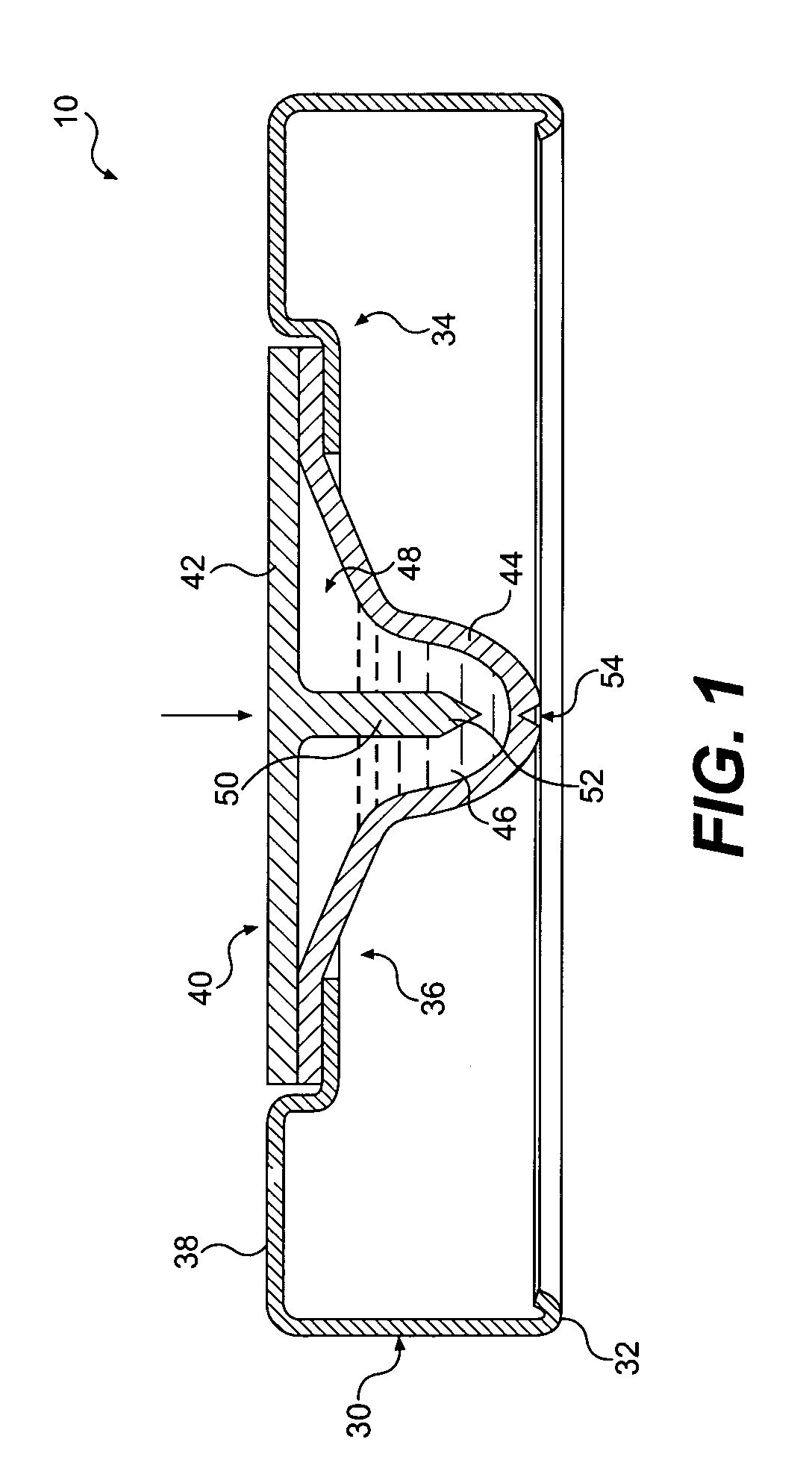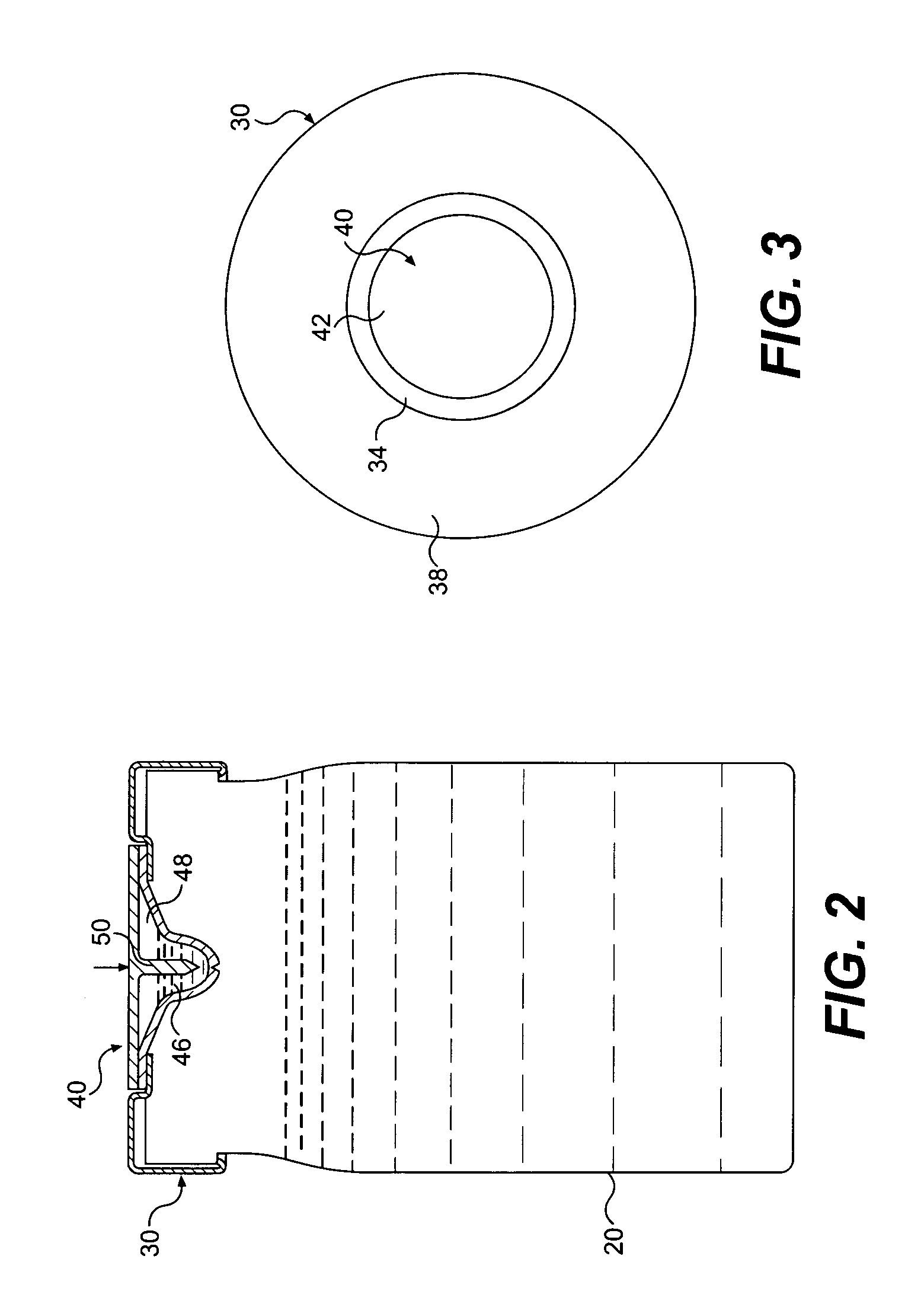Dispensing cap with capsule for container
a beverage container and capsule technology, applied in the field of capsules for beverage containers, can solve the problems of limited shelf life, deterioration of beverage flavor, and deterioration of flavor system developed for moderate to high acid containing single strength citrus beverages stored at ambient temperature, and achieve the effects of enhancing shelf life, and reducing the volume of capsules
- Summary
- Abstract
- Description
- Claims
- Application Information
AI Technical Summary
Benefits of technology
Problems solved by technology
Method used
Image
Examples
Embodiment Construction
[0023]Reference will now be made in detail to the present preferred embodiments of the invention, an example of which is illustrated in the accompanying drawings. Wherever possible, the same reference numbers will be used throughout the drawings to refer to the same or like parts.
[0024]The exemplary embodiment of the dispensing cap of the present invention is shown in FIG. 1 and is designated generally by reference numeral 10.
[0025]As embodied herein and referring to FIGS. 1 and 2, a cap 10 for use with a container 20 (shown in FIG. 2), preferably a beverage container, includes a closure ring 30 and a capsule 40. The closure ring 30 sealingly closes the container 20 from ambient air. The closure ring 30 may include a curved bottom end 32 for securing the closure ring 30 with threads or partial threads (not shown) on the container 20. Alternatively, the closure ring 30 may include threads or partial threads complementary to the threads or partial threads on the container 20.
[0026]In ...
PUM
 Login to View More
Login to View More Abstract
Description
Claims
Application Information
 Login to View More
Login to View More - R&D
- Intellectual Property
- Life Sciences
- Materials
- Tech Scout
- Unparalleled Data Quality
- Higher Quality Content
- 60% Fewer Hallucinations
Browse by: Latest US Patents, China's latest patents, Technical Efficacy Thesaurus, Application Domain, Technology Topic, Popular Technical Reports.
© 2025 PatSnap. All rights reserved.Legal|Privacy policy|Modern Slavery Act Transparency Statement|Sitemap|About US| Contact US: help@patsnap.com



